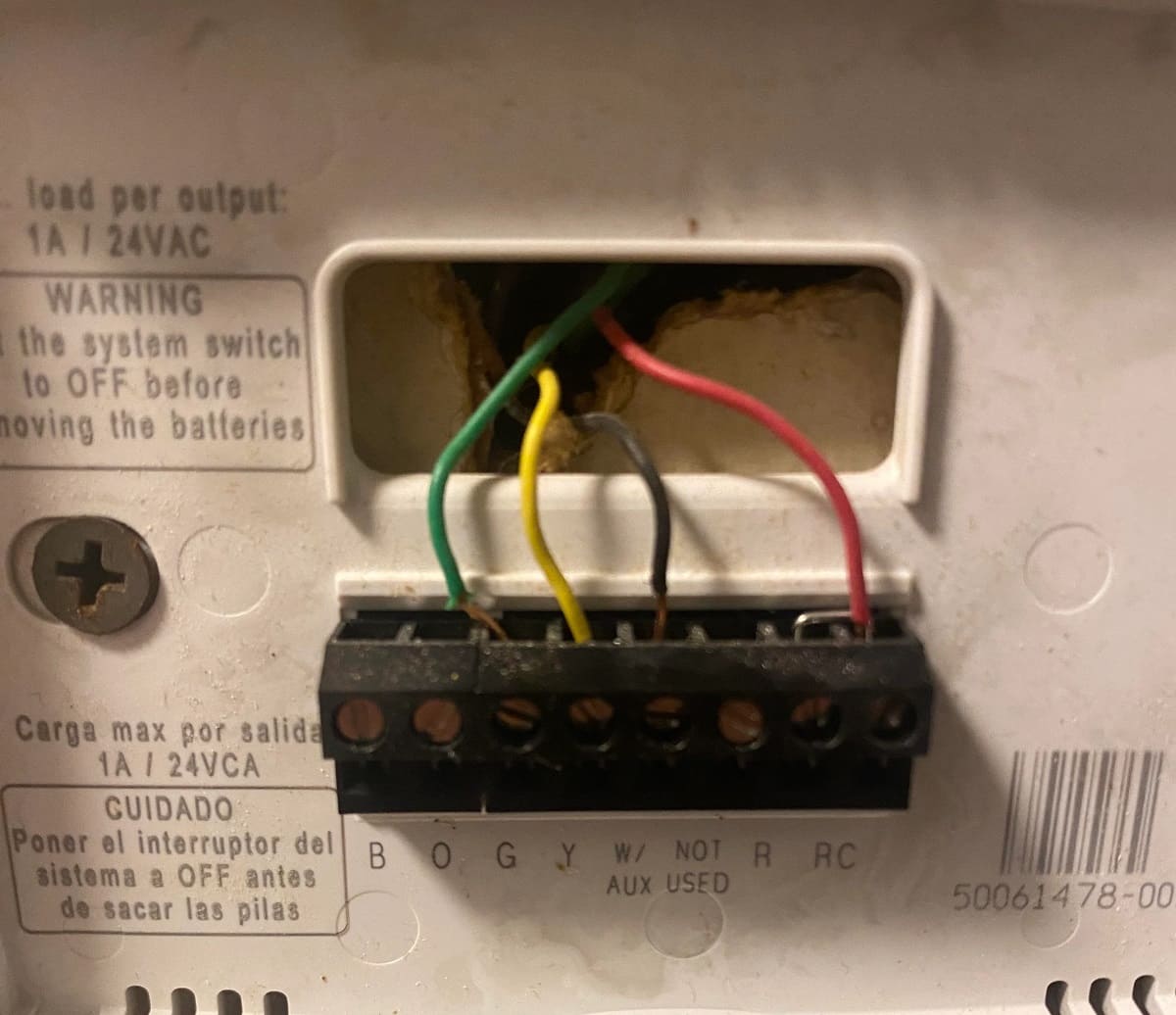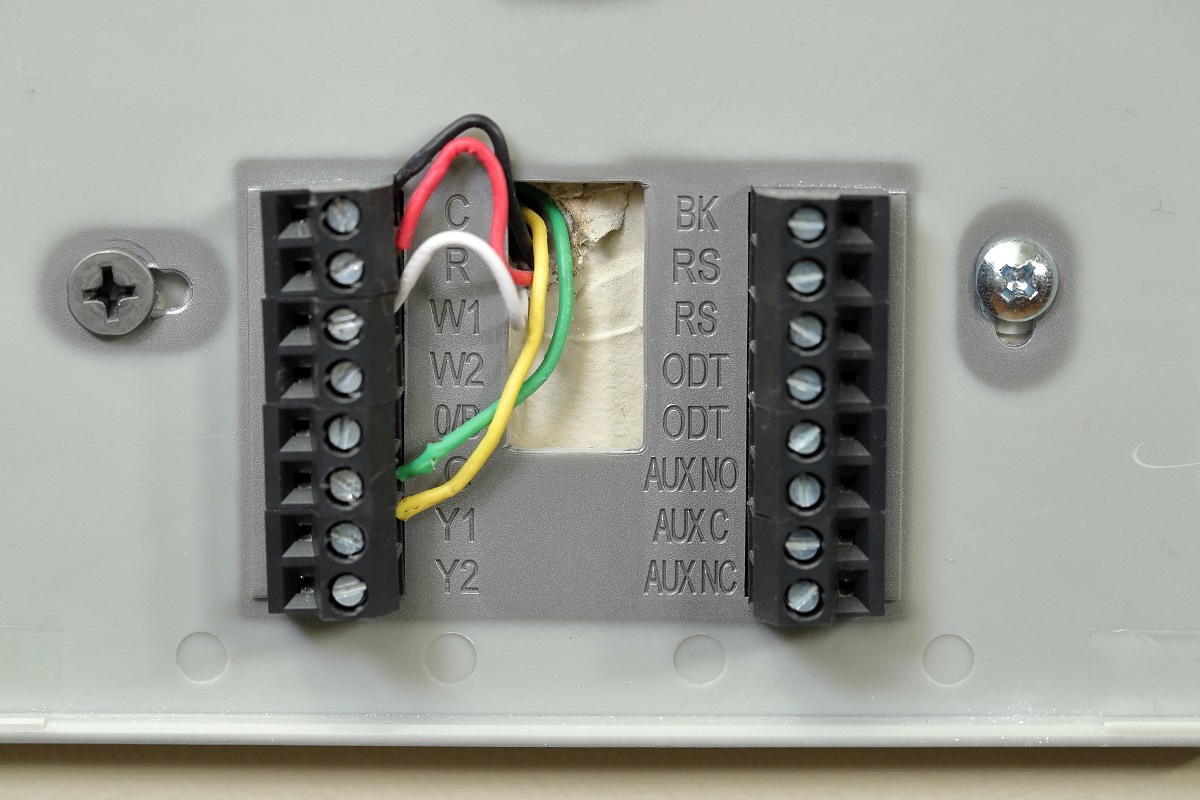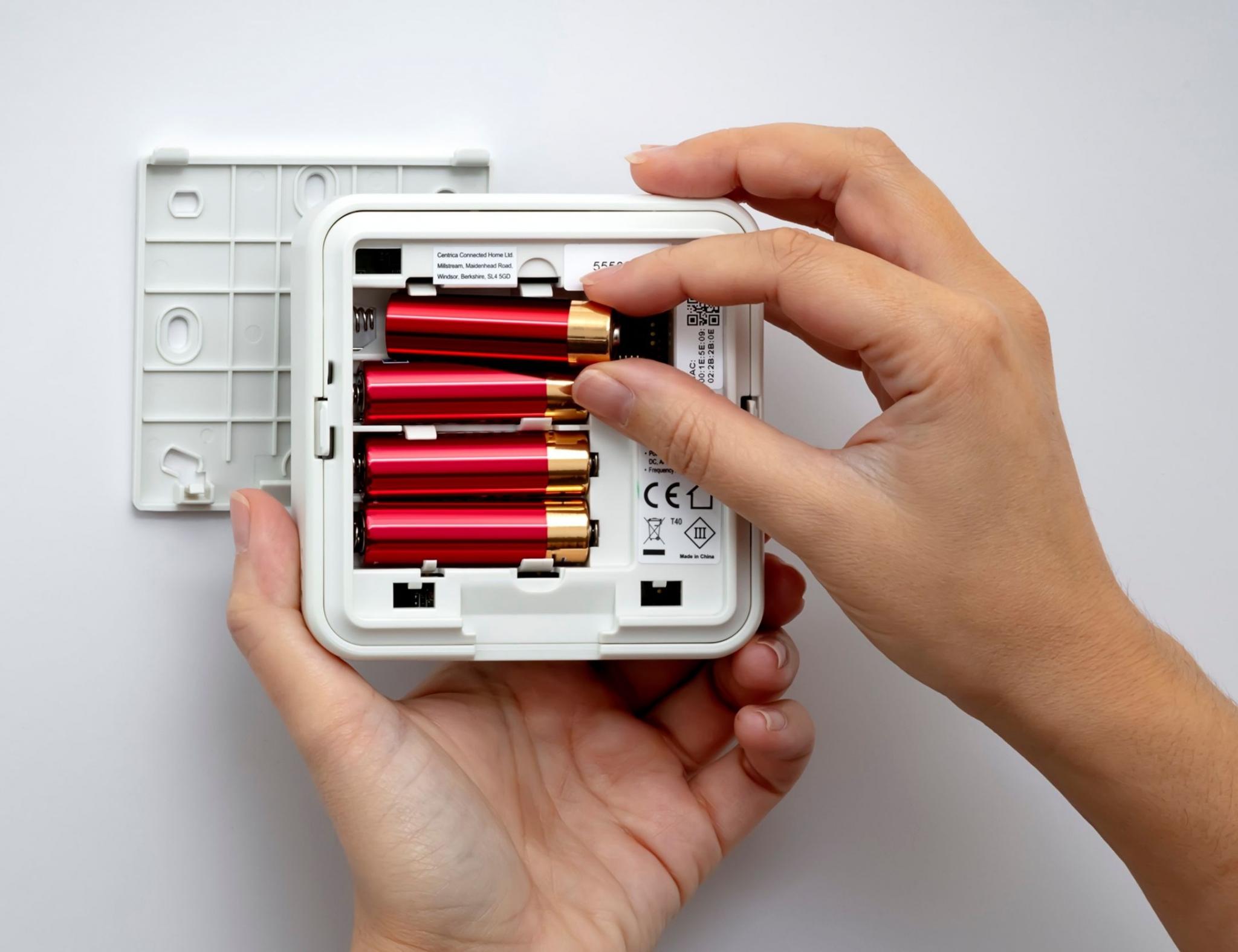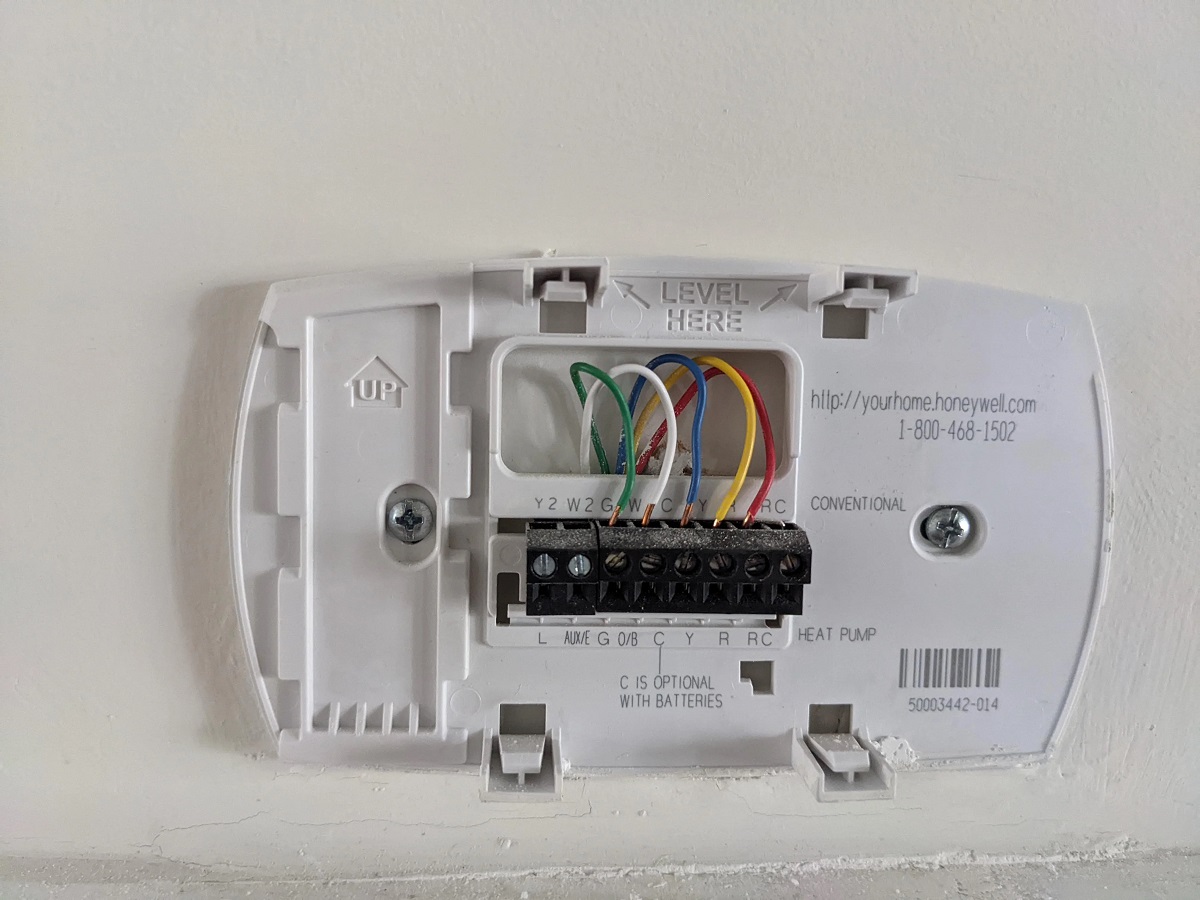Home>Home Appliances>Home Automation Appliances>How Many Wires Does Nest Thermostat Need


Home Automation Appliances
How Many Wires Does Nest Thermostat Need
Modified: February 18, 2024
Learn about the wiring requirements for the Nest thermostat in your home automation setup. Find out how many wires are needed for seamless integration. Explore more home automation appliances.
(Many of the links in this article redirect to a specific reviewed product. Your purchase of these products through affiliate links helps to generate commission for Storables.com, at no extra cost. Learn more)
Introduction
Welcome to the future of home comfort and energy efficiency. The Nest Thermostat has revolutionized the way we interact with our heating and cooling systems. With its sleek design, intuitive interface, and advanced features, the Nest Thermostat offers a seamless and intelligent way to manage indoor climate control.
In this article, we will delve into the wiring requirements for the Nest Thermostat, a crucial aspect of its installation process. Understanding the wiring needs of the Nest Thermostat is essential for homeowners looking to upgrade their existing thermostats or install a Nest Thermostat in a new home. By gaining insight into the wiring configurations and compatibility, you can ensure a smooth and successful installation process.
Whether you are a seasoned DIY enthusiast or seeking professional installation assistance, having a comprehensive understanding of the Nest Thermostat's wiring requirements will empower you to make informed decisions and optimize the performance of this cutting-edge device.
So, let's embark on a journey to unravel the intricacies of Nest Thermostat wiring, empowering you to harness the full potential of this innovative home automation appliance.
Key Takeaways:
- Embrace the Future of Home Comfort
The Nest Thermostat revolutionizes home climate control with its smart features and sleek design. Understanding its wiring requirements is crucial for a successful installation and optimal performance. - Navigate Compatibility Challenges with Confidence
By familiarizing yourself with the Nest Thermostat’s wiring needs and common configurations, you can confidently integrate it into your home, unlocking its full potential for energy efficiency and comfort.
Understanding the Nest Thermostat
The Nest Thermostat, developed by Nest Labs, a subsidiary of Google LLC, represents a paradigm shift in the realm of home climate control. It is designed to learn your preferences and schedule, enabling it to automatically adjust the temperature to maximize comfort while minimizing energy consumption. This smart thermostat employs advanced algorithms and sensors to analyze your patterns and create a personalized heating and cooling schedule, ultimately optimizing energy efficiency and reducing utility costs.
One of the key features that sets the Nest Thermostat apart is its ability to connect to Wi-Fi, allowing users to remotely control the temperature settings via a smartphone app or web browser. This level of connectivity and convenience empowers homeowners to make real-time adjustments, monitor energy usage, and receive valuable insights into their heating and cooling patterns.
Furthermore, the Nest Thermostat is equipped with a range of sensors, including temperature, humidity, and activity sensors, enabling it to adapt to your presence and preferences. Its sleek and modern design, coupled with a vibrant display, enhances the overall user experience, making it an attractive addition to any home.
By understanding the core principles and capabilities of the Nest Thermostat, homeowners can harness its full potential, enjoying a harmonious blend of comfort, convenience, and energy savings. With this foundation in place, we can now explore the crucial aspect of wiring requirements, which forms the backbone of the Nest Thermostat installation process.
Wiring Requirements for the Nest Thermostat
Before embarking on the installation of the Nest Thermostat, it is essential to comprehend the wiring prerequisites to ensure seamless compatibility and optimal functionality. The Nest Thermostat is designed to work with a wide range of heating, cooling, and HVAC systems, including conventional forced air, heat pump, radiant, and dual fuel systems.
The wiring requirements for the Nest Thermostat are contingent upon the specific heating and cooling system in place. In most cases, the Nest Thermostat necessitates a common wire, also known as a C-wire, to power its advanced features and maintain a consistent Wi-Fi connection. The presence of a C-wire is crucial for ensuring the stable operation of the Nest Thermostat and enabling its energy-saving capabilities.
It is important to note that older HVAC systems or thermostats may not have a C-wire, posing a potential compatibility challenge. In such instances, there are alternative solutions, such as using a power extender kit (PEK) provided by Nest to circumvent the absence of a C-wire. The PEK serves as a bridge to provide the necessary power for the Nest Thermostat, facilitating its seamless integration with a broader spectrum of heating and cooling systems.
Additionally, understanding the labeling and configuration of the existing thermostat wires is fundamental for a successful installation. The Nest Thermostat employs a straightforward labeling system, utilizing letters such as Y, W, G, R, and C to signify different connections. By comprehensively mapping out the existing wiring and cross-referencing it with the Nest Thermostat’s compatibility guidelines, homeowners can ascertain the suitability of their current system and identify any necessary adjustments or workarounds.
By familiarizing oneself with the specific wiring requirements and potential adaptations, homeowners can navigate the installation process with confidence, ensuring that the Nest Thermostat seamlessly integrates with their HVAC system and unlocks its full range of innovative features.
A Nest thermostat typically requires 3 wires: a power wire (usually labeled “Rh” or “R”), a wire for heating (labeled “W”), and a wire for cooling (labeled “Y”). If you have a heat pump system, you may need additional wires.
Common Wiring Configurations
Understanding the common wiring configurations encountered when installing the Nest Thermostat is pivotal for ensuring a smooth and successful integration with diverse heating and cooling systems. The Nest Thermostat is compatible with a multitude of wiring setups, encompassing both conventional and modern HVAC systems.
The following are some of the common wiring configurations and their corresponding functions:
- Rh or Rc (Power): This wire provides power to the heating and cooling system. In some systems, there are separate wires for heating (Rh) and cooling (Rc), while in others, a single wire serves both functions.
- Y (Compressor): The Y wire connects to the compressor, activating the cooling function of the HVAC system.
- W (Heat): The W wire is responsible for activating the heating function of the system, triggering the furnace or heat pump to generate warmth.
- G (Fan): This wire controls the fan, regulating its operation to circulate air throughout the home.
- C (Common): The C-wire, or common wire, provides a continuous power supply to the thermostat, enabling the operation of advanced features and maintaining a stable Wi-Fi connection.
It is important to note that not all HVAC systems will have all of these wires present. Some systems may utilize additional wires for specific functions, while others may operate with a more streamlined configuration. Understanding the unique wiring setup of your HVAC system is crucial for accurately configuring the Nest Thermostat and ensuring compatibility.
Moreover, for homes without a C-wire, the installation process may involve utilizing a power extender kit (PEK), which serves as a workaround to provide the necessary power for the Nest Thermostat. This innovative solution enables homeowners with older or incompatible systems to leverage the energy-saving and smart features of the Nest Thermostat without the need for extensive rewiring.
By familiarizing oneself with these common wiring configurations and their respective roles, homeowners can approach the installation process with clarity and confidence, knowing how to adapt the Nest Thermostat to suit their specific HVAC system.
Additional Considerations
When preparing to install the Nest Thermostat, there are several additional considerations that can significantly impact the overall success and efficiency of the integration process. These factors encompass various aspects, from compatibility checks to potential system enhancements.
Compatibility Verification: Before commencing the installation, it is advisable to utilize Nest’s online compatibility checker or consult with a professional to confirm the suitability of the Nest Thermostat for your specific HVAC system. This proactive step can preemptively identify any potential challenges and streamline the installation process.
Professional Assistance: While the Nest Thermostat is designed for straightforward installation, homeowners encountering complex wiring configurations or compatibility issues may benefit from enlisting the expertise of HVAC professionals. Professional installation not only ensures the seamless integration of the Nest Thermostat but also provides peace of mind regarding the system’s functionality.
System Enhancements: In some cases, the installation of the Nest Thermostat may prompt homeowners to consider additional system enhancements, such as upgrading to a more energy-efficient HVAC unit or optimizing ductwork. These enhancements can synergize with the advanced capabilities of the Nest Thermostat, further maximizing energy savings and indoor comfort.
Smart Home Integration: The Nest Thermostat is a pivotal component of a smart home ecosystem, offering compatibility with various smart home platforms and devices. Exploring the potential for integrating the Nest Thermostat with other smart home technologies, such as voice assistants or home automation systems, can elevate the overall convenience and functionality of your home environment.
Regular Maintenance: Once the Nest Thermostat is successfully installed, incorporating regular maintenance and system checks into your home care routine is essential for ensuring sustained performance and energy efficiency. Periodic inspections and filter replacements for your HVAC system can complement the Nest Thermostat’s efforts to optimize indoor air quality and comfort.
By taking these additional considerations into account, homeowners can approach the installation and utilization of the Nest Thermostat with a comprehensive perspective, leveraging its capabilities to enhance their home environment while maximizing energy efficiency and comfort.
Read more: How To Disconnect A Nest Thermostat
Conclusion
The Nest Thermostat represents a transformative leap in home climate control, offering an array of innovative features designed to optimize comfort, energy efficiency, and convenience. As we have explored the intricacies of its wiring requirements and compatibility considerations, it becomes evident that a thorough understanding of these aspects is pivotal for a successful installation and seamless integration with diverse HVAC systems.
By familiarizing oneself with the wiring prerequisites, common configurations, and potential adaptations, homeowners can approach the installation process with confidence, knowing how to navigate compatibility challenges and leverage the full spectrum of the Nest Thermostat’s capabilities. Whether it involves identifying the presence of a C-wire, utilizing a power extender kit, or seeking professional assistance, the journey toward harnessing the potential of the Nest Thermostat begins with a comprehensive understanding of its wiring requirements.
Furthermore, the Nest Thermostat serves as a cornerstone of smart home integration, offering connectivity and compatibility with a myriad of smart home platforms and devices. This opens the door to a holistic approach to home automation, where the Nest Thermostat collaborates with other smart technologies to create a seamlessly interconnected and energy-efficient living environment.
As homeowners embark on the installation and utilization of the Nest Thermostat, embracing additional considerations such as compatibility verification, professional assistance, system enhancements, and smart home integration can further elevate the overall experience, fostering a harmonious blend of comfort, convenience, and energy savings.
In essence, the journey of integrating the Nest Thermostat into your home is not merely a technical endeavor; it is a gateway to a more intelligent, efficient, and personalized approach to home climate control. By embracing the nuances of its wiring requirements and considering the broader implications of its installation, homeowners can embark on a transformative journey toward a more connected, comfortable, and energy-conscious living space.
With a solid understanding of the Nest Thermostat’s wiring requirements and the broader landscape of smart home integration, homeowners are poised to unlock the full potential of this groundbreaking device, redefining the way they interact with their home environment and paving the way for a more sustainable and enjoyable living experience.
Frequently Asked Questions about How Many Wires Does Nest Thermostat Need
Was this page helpful?
At Storables.com, we guarantee accurate and reliable information. Our content, validated by Expert Board Contributors, is crafted following stringent Editorial Policies. We're committed to providing you with well-researched, expert-backed insights for all your informational needs.















0 thoughts on “How Many Wires Does Nest Thermostat Need”